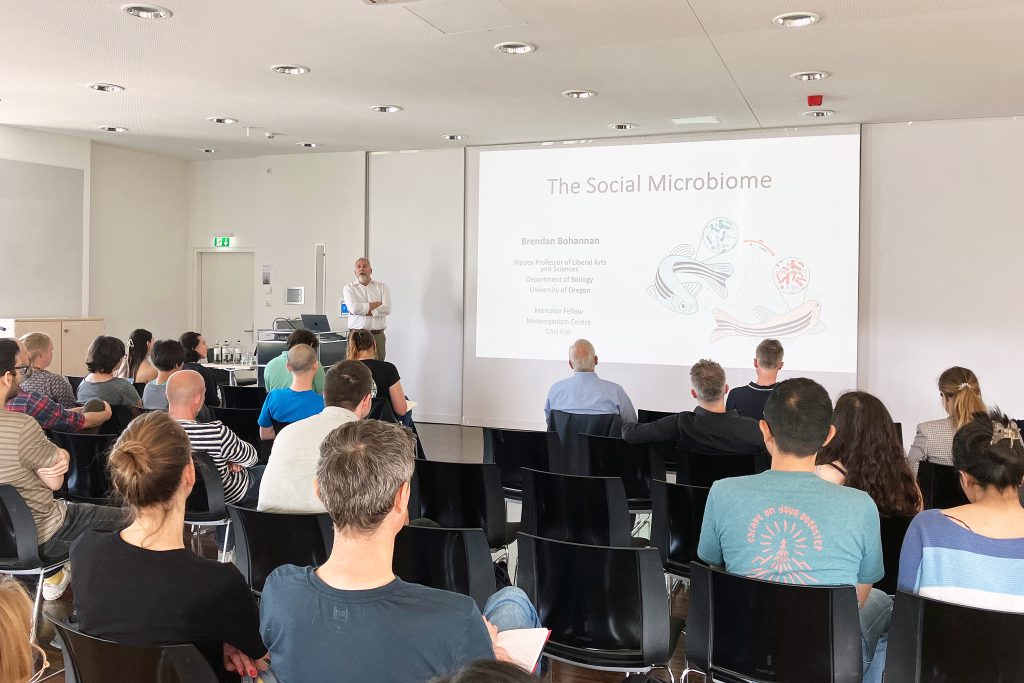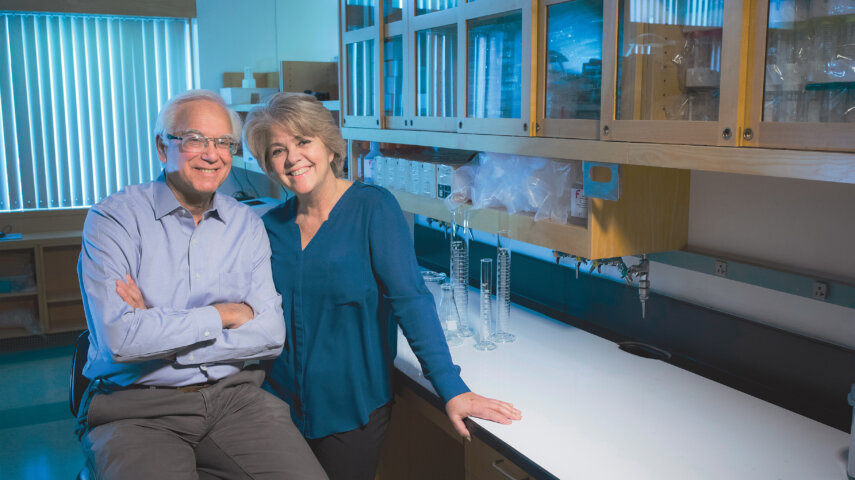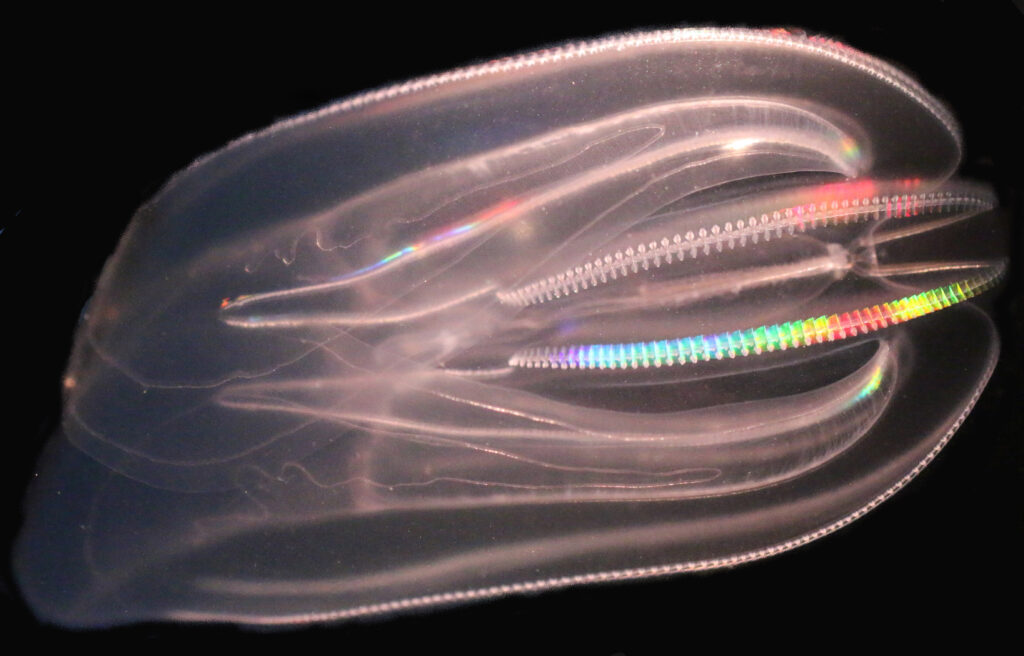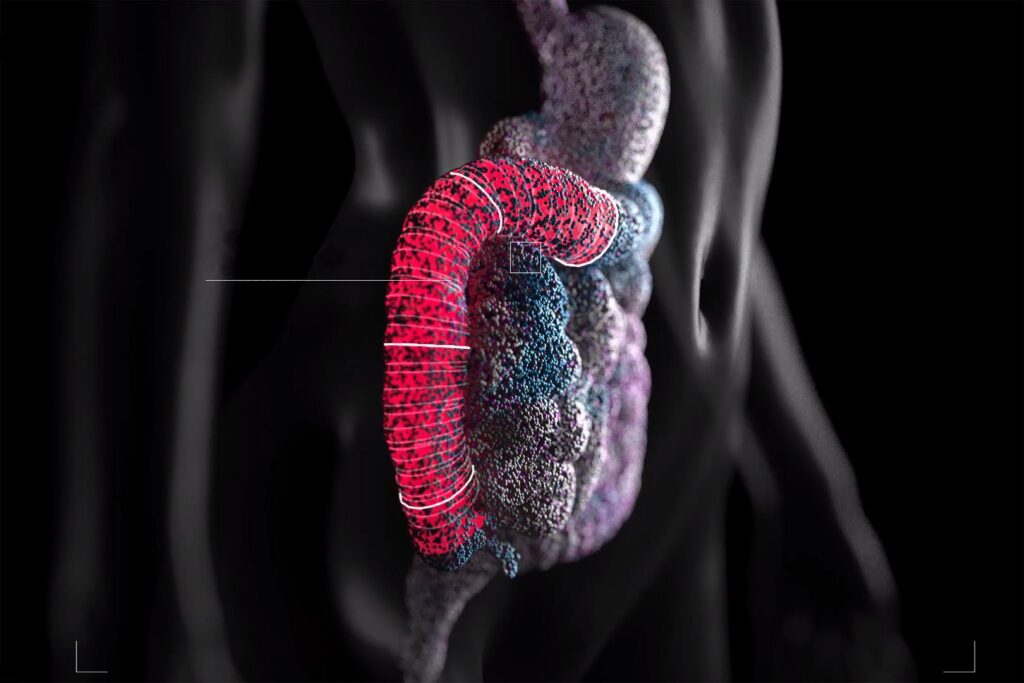The Social Microbiome: International CRC 1182 conference
Symposium of the Metaorganism Collaborative Research Centre at Kiel University on the connections between social interactions and the transmission of microorganisms
Yesterday, Kiel University hosted the international symposium ‘The Social Microbiome’ of the Collaborative Research Centre (CRC) 1182 ‘Origin and Function of Metaorganisms’. The event marked the start of the scientific conference programme in the third funding phase of the CRC which began in 2024. Around 50 scientists from Kiel and international researchers came together to discuss the importance of social interactions for the transmission and maintenance of a healthy human microbiome with, among others, the renowned US evolutionary ecologist Professor Brendan Bohannan.
Since 2016, the CRC 1182 has been investigating why and how microbial communities form long-term associations with their host organisms and the functional consequences of these interactions for health and disease. An important current aspect in this research field is the way in which microorganisms are passed on between different organisms and how this transmission influences all of the associated microorganisms in a host organism, the individual microbiome.
Social interactions shape the composition of the microbiome
During the early development of an individual organism, it is colonized by microbes, ultimately resulting in an organism-specific microbiome. In the past, researchers often considered this process only at the level of the individual host. More recently, they have begun to include microorganisms outside the host, i.e. in other living organisms and in the environment. As a result, social interactions in the broadest sense have garnered more attention, as they obviously play an important role in the transmission of microorganisms, for example from person to person.
“At our symposium, we discussed numerous open questions in this field: How does the social environment influence the microbiome composition of the individual? Can the human environment be designed to favour the transmission of beneficial microorganisms? Conversely, how are sustainable interventions in this transmission possible in order to inhibit the development of microbiome-associated diseases?” says Professor Hinrich Schulenburg, spokesperson of the CRC 1182, describing the scientific spectrum of the conference.
Microbiome transmission: Prospects for future health research
Dr Reena Debray, group leader at the Max Planck Institute for Evolutionary Anthropology in Leipzig, amongst others contributed to the CRC 1182 symposium. She is researching how transmission within social groups influences the structure, stability and evolution of the gut microbiome in non-human primates. Other topics included the effects of social isolation on the microbial colonisation of animals, how shielding from environmental influences as an unwanted side effect of building architecture contributes to reduced microbiome diversity and the natural transmission of microorganisms to new-borns as a constituent factor of the human microbiome.
Professor Brendan Bohannan from the Institute of Ecology and Evolution at the University of Oregon in Eugene, US, is regarded as one of the pioneers of microbial ecology and associated microbiome transmission research. As a Mercator Fellow of the German Research Foundation (DFG), he spends two months a year as a guest researcher of the CRC 1182. In his plenary lecture ‘The Social Microbiome’ at the Kiel conference, he presented the main features of this still young field of research.
“The microbiome of an animal or human does not exist in isolation. It is constantly in flux, for example through exchange of members with the microbiomes of other individuals. When this exchange is facilitated by social interactions, we call it “social transmission”. Social transmission is fascinating because it results in an interconnected web of microbiomes that scientists refer to as a “social microbiome”. Recent research suggests that social microbiomes may have unique properties; they may, for example, reduce the severity of a pathogen infection or shorten the time it takes for a microbiome to recover from the use of an antibiotic. Studying social transmission and social microbiomes could yield new approaches for altering the composition of an individual’s microbiome, ultimately improving human health,” emphasizes Bohannan.
Images are available for download:
www.uni-kiel.de/de/pressemitteilungen/2024/122-crc1182-socialmicrobiome.jpg
Caption: In his keynote lecture ‘The Social Microbiome’ Professor Brendan Bohannan from the University of Oregon presented the main features of the research field.
© Dr Barbara Cania, Kiel University
www.uni-kiel.de/de/pressemitteilungen/2024/122-crc1182-socialmicrobiome-hs.jpg
Caption: Around 50 researchers came together in Kiel for the symposium ‘The Social Microbiome’, which was opened by CRC 1182 spokesperson Professor Hinrich Schulenburg.
© Dr Barbara Cania, Kiel University
www.uni-kiel.de/de/pressemitteilungen/2024/122-crc1182-socialmicrobiome-rd.jpg
Caption: Dr Reena Debray from the Max Planck Institute for Evolutionary Anthropology reported on her research on microbiome transmission in non-human primates.
© Dr Barbara Cania, Kiel University
Contact:
Prof. Hinrich Schulenburg
Speaker CRC 1182 „Origin and Function of Metaorganisms“, Kiel University:
Phone: +49 431-880-4141
Email: hschulenburg@zoologie.uni-kiel.de
More information:
Priority Research Area „Kiel Life Science”, Kiel University:
www.kls.uni-kiel.de
Environmental Studies and Biology (Bohannan Lab), Institute of Ecology and Evolution,
University of Oregon, Eugene:
pages.uoregon.edu/bohannanlab





